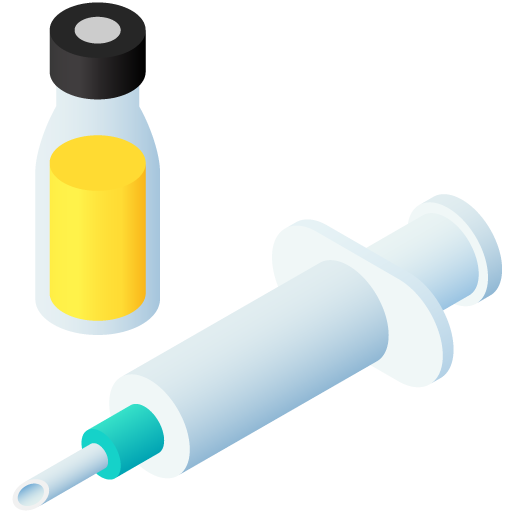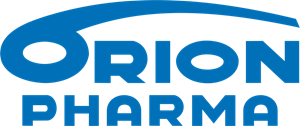Combination therapy
No results were found for your selected species
Bimectin
Active substance
ATC code
Species
Cattle, sheep and pigs.
Indications
For the effective treatment and control of the following harmful parasites of cattle, sheep and pigs:
Cattle
Gastrointestinal roundworms (adult and fourth-stage larvae):
Ostertagia spp. (including inhibited O. ostertagi)
Haemonchus placei
Trichostrongylus axei T. colubriformis Cooperia spp.
Bunostomum phlebotomum
Oesophagostomum radiatum
Strongyloides papillosus (adult)
Nematodirus helvetianus (adult) N. spathiger (adult)
Trichuris spp (adult).
Lungworms (adult and fourth-stage larvae):
Dictyocaulus viviparous
Eye worms (adult):
Thelazia spp.
Warbles:
Hypoderma bovis
H. lineatum
Mange mites:
Psoroptes bovis
Sarcoptes scabiei var. bovis
Sucking lice:
Linognathus vituli
Haematopinus eurysternus
Solenopotes capillatus
May also be used as an aid in the control of the mange mite Chorioptes bovis and biting lice Damalinia bovis, but complete elimination may not occur.
Persistent Activity
Treatment at the recommended dose rate can control re-infection with Haemonchus placei and Cooperia spp. acquired up to 14 days after treatment, Ostertagia ostertagi and Oesophagostomum radiatum acquired up to 21 days after treatment and Dictyocaulus viviparus up to 28 days after treatment.
To obtain optimal benefit from the persistent activity of the product for grazing animals, it is recommended that calves which are set-stocked in the first grazing season should be treated 3, 8 and 13 weeks after the day of turn-out. This can protect the animals from parasitic gastroenteritis and lungworm disease throughout the grazing season, provided they are set-stocked, all the calves included in the programme and that no untreated cattle are added to the pasture. Treated animals should always be monitored according to good husbandry practices.
Sheep
Gastrointestinal roundworms (adult and fourth-stage larvae):
Ostertagia circumcincta including inhibited larvae
O. trifurcata
Haemonchus contortus including inhibited larvae
Trichostrongylus axei (adults)
T. colubriformis and T. vitrinus (adults)
Cooperia curticei
Oesophagostomum columbianum
O. venulosum (adults)
Nematodirus filicollis
Chabertia ovina Trichuris ovis (adults).
Lungworms:
Dictyocaulus filaria (adult and fourth-stage larvae)
Protostrongylus rufescens (adults)
Nasal Bots (all larval stages)
Oestrus ovis
Pigs
Gastrointestinal roundworms (adult and fourth-stage larvae):
Ascaris suum
Hyostrongylus rubidus
Oesophagostomum spp.
Strongyloides ransomi (adult and somatic larval stages)
Lungworms:
Metastrongylus spp. (adults)
Lice:
Haematopinus suis
Mange mites:
Sarcoptes scabiei var. suis
Dose to be administered and administration route
Subcutaneous use.
The veterinary medicinal product should be given only by subcutaneous injection at the recommended dosage level of 200 mcg ivermectin per kg bodyweight under the loose skin in front of, or behind, the shoulder in cattle and over the neck in sheep. At the recommended dosage level of 300 mcg ivermectin per kg of bodyweight, the veterinary medicinal product should be given only subcutaneously in the neck of pigs.
Each ml contains 10 mg of ivermectin sufficient to treat 50 kg of bodyweight of cattle and sheep and 33 kg of bodyweight of pigs. The injection may be given with any standard automatic or single-dose or hypodermic syringe. Use of 17 gauge x ½ inch needle is suggested. Replace with a fresh sterile needle after every 10 to 12 animals.
Injection of wet or dirty animals is not recommended. If using a single-dose or hypodermic syringe, use a separate sterile needle to withdraw the veterinary medicinal product from the container. Massage the injection site after administration of the veterinary medicinal product.
In young pigs, especially those below 16 kg for which less than 0.5 ml of the veterinary medicinal product is indicated, dosing accuracy is important. The use of a syringe that can accurately deliver as little as 0.1 ml is recommended.
In young lambs weighing less than 20.0 kg give 0.1 ml per 5 kg. In these lambs the use of a syringe with can deliver as little as 0.1 ml is recommended.
To ensure a correct dosage, body weight should be determined as accurately as possible; accuracy of the dosing device should be checked.
The use of suitably calibrated measuring equipment is recommended.
If animals are to be treated collectively rather than individually, they should be grouped according to their bodyweight and dosed accordingly, in order to avoid under- or over- dosing.
Adverse reactions
Cattle, Sheep and Pigs:
|
Undetermined frequency (cannot be estimated from the available data): |
Injection site pain1,2 Injection site swelling3 |
1 Mild and transient following subcutaneous administration.
2 In sheep: sometimes intense.
3 In cattle only.
All these reactions disappeared without treatment.
Reporting adverse events is important. It allows continuous safety monitoring of a veterinary medicinal product. Reports should be sent, preferably via a veterinarian, to either the marketing authorisation holder or its local representative or the national competent authority via the national reporting system. See the package leaflet for respective contact details.
Dispensing
POM-VPSSUMMARY OF PRODUCT CHARACTERISTICS
1. NAME OF THE VETERINARY MEDICINAL PRODUCT
Bimectin 1% w/v Solution for Injection.
2. QUALITATIVE AND QUANTITATIVE COMPOSITION
Active Substances
Ivermectin 1.0 % w/v
For a full list of excipients, see section 6.1.
3. PHARMACEUTICAL FORM
Solution for injection.
A clear, colourless, slightly viscous, non-aqueous sterile solution
4. CLINICAL PARTICULARS
4.1 Target Species
Cattle, sheep and pigs.
4.2 Indications for use, specifying the target species
For the effective treatment and control of the following harmful parasites of cattle, sheep and pigs:
Cattle
Gastrointestinal roundworms (adult and fourth-stage larvae):
Ostertagia spp. (including inhibited O. ostertagi)
Haemonchus placei
Trichostrongylus axei T. colubriformis Cooperia spp.
Bunostomum phlebotomum
Oesophagostomum radiatum
Strongyloides papillosus (adult)
Nematodirus helvetianus (adult) N. spathiger (adult)
Trichuris spp (adult).
Lungworms (adult and fourth-stage larvae): Dictyocaulus viviparous
Eye worms (adult):
Thelazia spp.
Warbles:
Hypoderma bovis
H. lineatum
Mange mites:
Psoroptes bovis
Sarcoptes scabiei var. bovis
Sucking lice:
Linognathus vituli
Haematopinus eurysternus
Solenopotes capillatus
May also be used as an aid in the control of the mange mite Chorioptes bovis and biting lice Damalinia bovis, but complete elimination may not occur.
Persistent Activity
Treatment at the recommended dose rate can control re-infection with Haemonchus placei and Cooperia spp. acquired up to 14 days after treatment, Ostertagia ostertagi and Oesophagostomum radiatum acquired up to 21 days after treatment and Dictyocaulus viviparus up to 28 days after treatment.
To obtain optimal benefit from the persistent activity of the product for grazing animals, it is recommended that calves which are set-stocked in the first grazing season should be treated 3, 8 and 13 weeks after the day of turn-out. This can protect the animals from parasitic gastroenteritis and lungworm disease throughout the grazing season, provided they are set-stocked, all the calves included in the programme and that no untreated cattle are added to the pasture. Treated animals should always be monitored according to good husbandry practices.
Sheep
Gastrointestinal roundworms (adult and fourth-stage larvae):
Ostertagia circumcincta including inhibited larvae
O. trifurcata
Haemonchus contortus including inhibited larvae
Trichostrongylus axei (adults)
T. colubriformis andT. vitrinus (adults)
Cooperia curticei
Oesophagostomum columbianum
O. venulosum (adults)
Nematodirus filicollis
Chabertia ovina Trichuris ovis (adults).
Lungworms:
Dictyocaulus filaria (adult and fourth-stage larvae)
Protostrongylus rufescens (adults)
Nasal Bots (all larval stages)
Oestrus ovis
Pigs
Gastrointestinal roundworms (adult and fourth-stage larvae):
Ascaris suum
Hyostrongylus rubidus
Oesophagostomum spp.
Strongyloides ransomi (adult and somatic larval stages)
Lungworms:
Metastrongylus spp. (adults)
Lice:
Haematopinus suis
Mange mites:
Sarcoptes scabiei var. suis
4.3 Contraindications
Do not use in animals with known hypersensitivity to the active ingredient. Do not use by intramuscular or intravenous administration.
4.4 Special warnings for each target species
Care should be taken to avoid the following practices because they increase the risk of development of resistance and could ultimately result in ineffective therapy:
- Too frequent and repeated use of anthelmintics from the same class, over an extended period of time.
- Underdosing, which may be due to underestimation of body weight, misadministration of the product, or lack of calibration of the dosing device.
Suspected clinical cases of resistance to anthelmintics should be further investigated using appropriate tests (e.g. Faecal Egg Count Reduction Test). Where the results of the test(s) strongly suggest resistance to a particular anthelmintic, an anthelmintic belonging to another pharmacological class and having a different mode of action should be used.
Resistance to ivermectin has been reported in Teladorsagia circumcincta in sheep and Ostertagia ostertagi in cattle. Therefore, the use of this product should be based on local (regional, farm) epidemiological information about susceptibility of these helminth species and recommendations on how to limit further selection for resistance to anthelmintics.
4.5 Special precautions for use
(i) Special Precautions for use in animals
The product has been formulated specifically for use in cattle, sheep and pigs. It should not be used in other species as severe adverse reactions, including fatalities in dogs, may occur.
(ii)Special Precautions to be taken by the Person Administering the Product to Animals
Take care to avoid self-administration: the product may cause local irritation and/or pain at the site of injection.
Direct contact of the product with the skin should be kept to a minimum.
Do not smoke or eat while handling the product. Wash hands after use. (iii) Other precautions
When using the 250 ml and 500 ml pack sizes, use only automatic syringe equipment. For the 50 ml pack size, use of a multiple dose syringe is recommended. To refill the syringe, use of a draw off needle is recommended to avoid excessive broaching of the stopper.
4.6 Adverse reactions (frequency and seriousness)
Cattle
Transient discomfort has occasionally been observed in cattle following subcutaneous administration. A low incidence of soft tissue swelling at the injection site has been observed.
Sheep
Discomfort, sometimes intense but usually transient, has been observed in some sheep immediately following subcutaneous administration.
Pigs
Mild and transient discomfort has occasionally been observed in pigs following subcutaneous injection.
All these reactions disappeared without treatment.
4.7 Use during pregnancy and lactation or lay
Pregnancy
The product can be administered to beef cows, sheep and pigs at any stage of pregnancy.
Lactation
Do not use in dairy cows or sheep producing milk for human consumption
Do not use in non-lactating dairy cows or sheep within 60 days of calving/lambing. The product can be used in sows during lactation.
Fertility
Fertility is not affected by administration of the product.
4.8 Interaction with other medicinal products and other forms of interaction
The product can be used concurrently without adverse effects with foot and mouth disease vaccine or clostridial vaccine, given at separate injection sites.
4.9 Amounts to be administered and administration route
The product should be given only by subcutaneous injection at the recommended dosage level of 200 mcg ivermectin per kg bodyweight under the loose skin in front of, or behind, the shoulder in cattle and over the neck in sheep. At the recommended dosage level of 300 mcg ivermectin per kg of bodyweight, the product should be given only subcutaneously in the neck of pigs.
Each ml contains 10 mg of ivermectin sufficient to treat 50 kg of bodyweight of cattle and sheep and 33 kg of bodyweight of pigs. The injection may be given with any standard automatic or single-dose or hypodermic syringe. Use of 17 gauge x ½ inch needle is suggested. Replace with a fresh sterile needle after every 10 to 12 animals. Injection of wet or dirty animals is not recommended. If using a single-dose or hypodermic syringe, use a separate sterile needle to withdraw the product from the container. Massage the injection site after administration of the product.
In young pigs, especially those below 16 kg for which less than 0.5 ml of the product is indicated, dosing accuracy is important. The use of a syringe that can accurately deliver as little as 0.1 ml is recommended.
In young lambs weighing less than 20.0 kg give 0.1 ml per 5 kg. In these lambs the use of a syringe with can deliver as little as 0.1 ml is recommended.
To ensure administration of a correct dose, body weight should be determined as accurately as possible; accuracy of the dosing device should be checked.
If animals are to be treated collectively rather than individually they should be grouped according to their bodyweight and dosed accordingly, in order to avoid under- or over- dosing.
4.10 Overdose (symptoms, emergency procedures, antidotes) if necessary
Cattle
Single doses of 4.0 mg ivermectin per kg (20 x the use level) given subcutaneously resulted in ataxia and depression.
Sheep
At dose levels up to 4 mg ivermectin per kg (20 x the use level) given subcutaneously resulted in ataxia and depression. No signs of systemic toxicity were observed in sheep treated with the product at up to 3 times the recommended dose rate, soft tissue swellings at the injection site were observed.
Pigs
A dose of 30 mg ivermectin per kg (100 x the recommended dose of 0.3 mg per kg) injected subcutaneously to pigs caused lethargy, ataxia, bilateral mydriasis, intermittent tremors, laboured breathing and lateral recumbancy.
In the case of overdosage, symptomatic treatment should be given.
4.11 Withdrawal periods
Cattle
Meat and offal: 49 days.
Do not use in lactating cows producing milk for human consumption. Do not use in non-lactating dairy cows including pregnant dairy heifers within 60 days of calving.
Sheep
Meat and offal: 42 days.
Do not use in lactating sheep producing milk for human consumption. Do not use in sheep within 60 days of lambing where milk is to be used for human consumption.
Pigs
Meat and offal: 28 days.
5. PHARMACOLOGICAL or IMMUNOLOGICAL PROPERTIES
ATC vet code: QP54AA01
Pharmacotherapeutic group: Endectocide
5.1 Pharmacodynamic properties
Ivermectin is a member of the macrocyclic lactone class of endectocides which have a unique mode of action. Compounds of the class bind selectively and with high affinity to glutamate-gated chloride ion channels which occur in invertebrate nerve and muscle cells. This leads to an increase in the permeability of the cell membrane to chloride ions with hyperpolarization of the nerve or muscle cell, resulting in paralysis and death of the parasite. Compounds of this class may also interact with other ligand-gated chloride channels, such as those gated by the neurotransmitter gammaaminobutyric acid (GABA).
The margin of safety for compounds of this class is attributable to the fact that mammals do not have glutamate-gated chloride channels, the macrocyclic lactones have a low affinity for other mammalian ligand-gated chloride channels and they do not readily cross the blood-brain barrier.
5.2 Pharmacokinetic properties Maximum plasma concentration:
Cattle:
At a dose level of 0.2 mg ivermectin per kg a maximum plasma concentration of 35-50 ng/ml is reached in ± 2 days and the half-life in plasma is 2.8 days. It is also established that ivermectin is carried mainly in the plasma (80%). This distribution between plasma and blood cells remains relatively constant.
Sheep:
At a dose of 0.3 mg ivermectin per kg an average peak of 16 ng/ml is reached one day after injection.
Pigs:
During trials carried out at a dose rate of 0.3 mg ivermectin per kg bodyweight, peak plasma concentrations were reached in 3 (±0.5) days and the drug persisted in plasma for up to 28 days. Excretion: length of time and route
Cattle:
Only about 1-2% is excreted in the urine the remainder is excreted in the faeces, approximately 60% of which is excreted as unaltered drug. The remainder is excreted as metabolites or degradation products.
Sheep:
Radioactive ivermectin was administered to sheep at a dose rate of 0.3 mg per kg. Analyses of the faeces showed that about 99% of the drug and its metabolites are excreted in the faeces, +/- 1% being excreted in the urine.
Pigs:
Biliary excretion is also the major route of ivermectin excretion in pigs.
6. PHARMACEUTICAL PARTICULARS
6.1 List of excipients
Glycerol
Glycerol formal
6.2 Incompatibilities
In the absence of compatibility studies, this veterinary medicinal product must not be mixed with other veterinary medicinal products.
6.3 Shelf-life
Shelf-life of the veterinary medicinal product as packaged for sale: 3 years Shelf-life after first opening the immediate packaging: 28 days.
6.4 Special Precautions for Storage
This veterinary medicinal product does not require any special storage conditions.
6.5 Nature and Contents of Container
Multiple-dose polyethylene bottles of 50 ml, 250 ml and 500 ml sealed with bromobutyl seals and aluminium overseals, each containing a clear, colourless sterile solution. Not all pack sizes may be marketed.
6.6 Special Precautions for the Disposal of Unused Medicinal Product or Waste Materials, if any
Any unused veterinary medicinal product or waste materials derived from such veterinary medicinal product should be disposed of in accordance with local requirements. The product should not enter water courses as this may be dangerous to fish and other aquatic organisms.
7. MARKETING AUTHORISATION HOLDER
Bimeda Animal Health Limited
2 / 3 / 4 Airton Close
Tallaght
Dublin 24
Ireland
8. MARKETING AUTHORISATION NUMBER
Vm 50146/4002
9. DATE OF FIRST AUTHORISATION
21 September 2000
10. DATE OF REVISION OF THE TEXT
October 2018
Approved: 18 October 2018


| Art. Nr. | 50146/4002 |
|---|---|
| EAN | 5391510230540 |
 TRUSTED SOURCE
TRUSTED SOURCE








